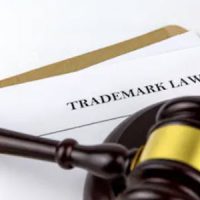How Will a Court Determine if Alleged Trademark Infringement Constitutes a “Likelihood of Confusion”?

To prove trademark infringement, a plaintiff must establish that the offending mark in question is likely to confuse a reasonable consumer. You may be wondering: How does a court determine what constitutes a reasonable likelihood of confusion in a trademark infringement claim? It is a totality of the circumstances evaluation—and there are a number of different factors that must be assessed. Here, our Boca Raton trademark infringement attorney explains the most important things to know about the “likelihood of confusion” standard in a trademark infringement case.
Why It Matters: What is a Likelihood of a Confusion in a Trademark Infringement Case?
The concept of “likelihood of confusion” is pivotal in trademark infringement cases, as it evaluates whether a consumer might mistake one brand for another due to similar trademarks. It matters because it underpins the protection of a company’s brand identity, shields consumer trust, and prevents unfair competition. Notably, courts use several factors to determine the extent to which reasonable consumers are likely to confuse goods/services.
Key Factors that a Court Will Consider in Assessing a “Likelihood of Confusion”
In a trademark infringement claim, a court will determine the “likelihood of confusion” by evaluating several key factors, including:
- Facial Similarity of Mark: The court examines the visual and phonetic similarities between the two trademarks, including comparisons of the design, color, and font, as well as the sounds or connotations the marks evoke.
- Proximity of Businesses: If the businesses operate in closely related fields or share a target market, confusion is more likely. For instance, two tech companies with similar logos could easily be confused, while a tech company and a bakery might not face the same issue.
- Strength of Mark: The more distinctive or well-known a mark, the broader the protection it enjoys. Strong marks such as arbitrary or fanciful marks are more likely to cause confusion than descriptive or generic ones.
- Similarity of Marketing/Advertising: If the parties use similar sales methods or marketing channels, or if their advertisements target similar demographics, it increases the likelihood of confusion.
- Behavior of Consumers in Specific Market: Courts will consider the purchasing conditions and habits of the consumers in the relevant market. For example, hurried purchases or purchases without much scrutiny might increase the chance of confusion.
- Evidence of Actual Confusion: Courts will take into account any instances of real-life consumer confusion, such as misdirected calls or emails, which serve as strong evidence for the likelihood of confusion.
- Evidence of Ill Intent by Defendant: If the defendant deliberately tried to imitate the plaintiff’s mark to deceive consumers, this can heavily sway the court’s decision. The use of a similar mark without bad intent, however, does not automatically preclude a finding of infringement.
Call Our Boca Raton, FL Trademark Infringement Lawyer Today
At Perkins Law – Brand Protection, our Boca Raton trademark law attorney is a diligent, experienced, and solutions-oriented advocate for businesses and entrepreneurs. Have questions about trademark infringement lawsuits? We can help. Contact us today for a confidential, no commitment consultation. Our firm handles trademark infringement cases throughout South Florida.
